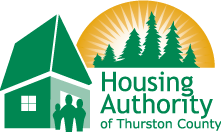Understanding NSPIRE Inspections: Handrails
An important aspect of the National Standards for the Physical Inspection of Real Estate (NSPIRE) inspections is the evaluation of handrails on properties. This article will offers insights into the NSPIRE requirements regarding handrails, underscoring the importance of meeting these standards for the safety of the residents.
The Basics of Handrail Requirements
Under NSPIRE, the criteria for handrails are straightforward yet important for ensuring resident safety. If a staircase consists of four or more steps, it must have at least one handrail. This standard aligns with previous requirements, highlighting the continuity in prioritizing resident safety across different inspection protocols. Additionally, for ramps, a new requirement stipulates the need for two handrails if the ramp is six inches or more in height or six feet in length. This enhancement in requirements draw attention to the emphasis on providing additional support and safety for residents using ramps.
Specifications and Compliance
The handrails must adhere to specific measurements to be considered compliant with NSPIRE standards. They should be between 28 and 42 inches tall, providing a comfortable and accessible height for most residents. For stairs, the handrail must extend from the first to the last riser, covering the entire length of the staircase. This requirement ensures that residents have support throughout their ascent or descent. Handrails must also be securely anchored, without any physical damage or looseness that could compromise their functionality.
A critical aspect of the handrail’s design is its ability to be “reasonably grasped.” This means the handrail must be of a size and shape that allows for a firm and secure grip, an essential feature for ensuring the safety of residents as they navigate stairs or ramps.
Addressing Deficiencies
During inspections, any deviation from these standards is noted as a deficiency that requires attention. For example, a staircase with four steps but no handrail, or a ramp with only one handrail, would not meet NSPIRE standards. Similarly, a handrail that begins at the second riser instead of extending the full length of the staircase would be considered incorrectly installed.
Corrective Actions and Best Practices
To address any deficiencies, properties must take corrective actions to meet NSPIRE standards. This might involve installing new handrails, ensuring they start at the appropriate place on stairs or ramps, and verifying that they are of a graspable size and securely anchored. By adhering to these guidelines, we not only comply with NSPIRE standards but, more importantly, enhance the safety and accessibility of our properties for all residents.
Conclusion
The safety of the residents is a top priority, and adhering to NSPIRE inspection standards, particularly regarding handrails, is a vital part of our commitment. By ensuring our handrails meet these specific requirements, we provide a safer, more accessible environment for everyone in our community. If you have any questions about NSPIRE inspections or need further information, please feel free to reach out. Together, we can ensure our properties remain safe, compliant, and welcoming for all residents.
